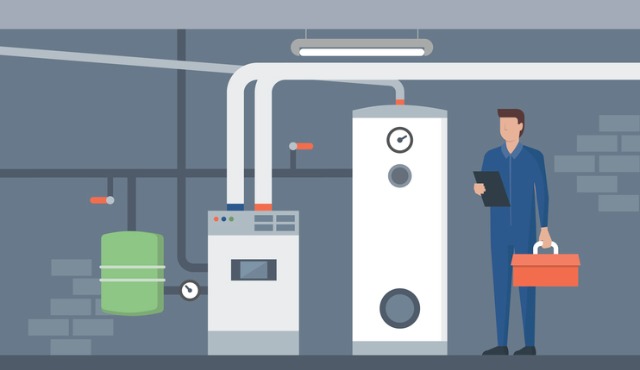By Brooke Chaplan
As the weather starts to cool down, now is the perfect time to make sure your furnace is in good working order. After all, you don't want to be left in the cold this winter! In this guide, we'll cover everything you need to know about furnace repair and maintenance, from troubleshooting common problems to annual maintenance tips. By the time you're finished reading, you'll be a furnace expert!
How Does a Furnace Work?
Before we get into furnace repair and maintenance, let's first take a step back and understand how a furnace works. A furnace heats air by burning natural gas, propane, or oil. The heat produced by the burning fuel is then transferred to the air, which is circulated throughout your home by a blower motor.
The Basics of Furnace Maintenance
Now that you understand how a furnace works, let's talk about some basic maintenance tasks that every homeowner should perform. First and foremost, it's important to change your furnace filter regularly. A dirty filter can restrict airflow and cause your furnace to work harder than it needs to, which can lead to premature wear and tear. We recommend changing your filter at least once every three months.
In addition to changing your filter, you should also have your furnace serviced by a professional at least once a year. During a service visit, the technician will inspect your furnace for any potential problems and perform any necessary repairs. They will also clean the burner assembly and blower motor—two important components of your furnace that can become clogged with dirt and dust over time.
Troubleshooting Common Furnace Problems
Even with regular maintenance, furnaces can still experience occasional problems. If your furnace isn't working properly, here are some troubleshooting tips to help you identify the issue and get it resolved quickly:
- If your furnace doesn't turn on at all, check to make sure that it's plugged in and that there's power running to it. You may also want to check your fuse box or circuit breaker panel to see if there have been any recent power outages in your area.
- If your furnace turns on but doesn't produce any heat, the first thing you should do is check your thermostat settings. Make sure that the thermostat is set to "heat" mode and that the temperature is turned up high enough for the furnace to kick on. If the settings seem fine, but there's still no heat coming from the vents, there may be an issue with the pilot light or igniter—two components that are essential for igniting the fuel inside your furnace.
- If your furnace turns on but then shuts off again after only a few minutes, this could be an indication that there's too much dirt and dust build-up inside the unit. Try vacuuming around the base of the unit to remove any debris that might be blocking airflow. You should also check your air filter and change it if it's filthy—a dirty filter can restrict airflow and cause all sorts of problems for your furnace.
We hope this guide has given you a better understanding of how furnaces work, as well as some helpful tips for keeping yours in good working order all winter long! Remember, regular maintenance is key—be sure to change your air filter every three months and have professional service performed at least once per year. And if you ever run into any problems with your furnace, don't hesitate to refer back to this guide—troubleshooting common issues is easy when you know what you're doing!
 Brooke Chaplan is a freelance writer and blogger. She lives and works out of her home in Los Lunas, New Mexico. She recommends reaching out to local professionals, like Heaney Plumbing & Heating, for more tips on how to fix your heating. For more information, contact Brooke via Twitter @BrookeChaplan.
Brooke Chaplan is a freelance writer and blogger. She lives and works out of her home in Los Lunas, New Mexico. She recommends reaching out to local professionals, like Heaney Plumbing & Heating, for more tips on how to fix your heating. For more information, contact Brooke via Twitter @BrookeChaplan.








